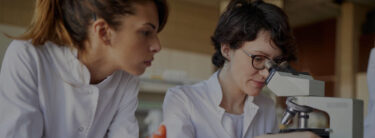
In 2015, the United Nations General Assembly proclaimed 11th February as the International Day of Women and Girls in Science. Over this seven year period, the date has become an annual opportunity for scientific and cultural institutions to organise activities and programmes that highlight the presence of women in science and encourage scientific vocations amongst females. Here, we address if this annual observance which aims to empower and achieve gender equality, has managed to move the dial in the right direction.
Arantxa Arnaiz, Education Services Manager, has recently carried out a study – as part of her Master’s thesis on Innovation in Social and Educational Intervention at Rovira i Virgili University – on how gender has conditioned the lives of women professionals in the scientific and technological fields. The fact is that we live in a heteropatriarchal society, which has an intrinsic multitude of dynamics and behaviours that are considered “normal” while, in reality, they discriminate against women and girls; and the scientific field is no exception.
A revealing study with female scientists
The study consisted of conducting semi-structured interviews with twelve female scientists from Barcelona, who asked them about the difficulties and discrimination they have experienced or are experiencing in their professional careers. The people chosen were of different ages, intending to look for generational differences. Most of the female scientists over 45 years of age answered ‘no’ when asked if they had experienced discrimination. On the other hand, the younger women answered clearly and affirmatively, perhaps because, in recent years, women have become more aware and attentive to issues such as gender discrimination.
When analysing the situations of each one of them, in all cases except one, some form of discrimination was detected. This includes different treatment for being a woman, male empowerment, paternalism on the part of the bosses, and the most significant aspect: discrimination for being a mother. The latter is due to an alleged low scientific productivity during this period, which leads to the relegation of scientific mothers to shadow management roles, with differentiation of tasks by gender. This results in ‘glass ceiling’ conditions, where women are not being promoted to higher positions (the same as men) and where men choose their colleagues, who are also men. Such discrimination, therefore, leads to the impossibility of occupying higher positions and, consequently, women do not have access to higher salaries.
What is the role of education in scientific disciplines?
A significant aspect of the scientific vocations of the interviewees is that most have devoted themselves to science through the influence of primary or secondary school teachers. At Anthesis, our education experts work through the educational services of museums or science and technology facilities, to ensure that education in the STEM fields can be a source of inspiration for the professional careers of the students who take part in the activities, considering that the middle and upper stages of primary school are key to fostering scientific and technological vocations and breaking down the gender stereotypes related to these disciplines. Promoting scientific training and providing female references in the field opens up the horizons of girls who, when projecting their future, can see it as natural to be able to dedicate themselves professionally to the scientific or technological field.
In short, this case study highlights the importance of continuing to work to improve and reverse the current situation, and the potential of education so that students, especially girls and adolescents, can normalise their professional ambitions in the field of science. There is still a long way to go, as circumstances of discrimination continue to be identified in the scientific workplace, including paternalistic machismo, lack of female empowerment, discrimination by the male scientific elite, discrimination due to female physical appearance in a masculinised environment, and non-transparent salary supplements.
How do we propose to minimise female discrimination in science?
The women scientists that were interviewed have made some proposals for how to minimise discrimination:
- Rethink how we award research scholarships, including women scientists who are mothers, favouring a parity system.
- Work to ensure that salary incentives, also known as bonuses, are granted transparently and according to public criteria.
- Incorporate inclusive language so that both men and women feel identified. Universities are asked to draw up or adhere to an inclusive language manual to be shared with all staff once a year, with an annual review. This manual should reflect social diversity (LGTBQ+ group, racial issues, people with functional diversity, etc.) both graphically and in its content.
- Ensure the alternation of positions, i.e. if a position has been occupied by a man, in the next call for applications, if the curriculum is equal, it should be occupied by a woman.
- Continue to apply positive discrimination quotas, ensuring that the candidates who reach the final stage are all women candidates for the post.
- Globalise in all grants/contracts the statement of adding one year for each maternity or paternity leave requested and taken.
- Before applying any measures, analyse whether it penalises women. Raise awareness in society, especially among the new generations, to highlight these micro-discriminations, subtle differences, etc.
- Stipulate that all doctoral students should have a mentor to be able to continue their professional careers. This mentor should promote his/her team by alternating the gender of the doctoral students.
- Training for teaching staff (both male and female, especially older staff, to deal with gender issues, ensuring that they are aware of and apply current equality criteria.
- Give visibility to the diversity of women scientists with different backgrounds, different physical aspects, or different personalities.
We are the world’s leading purpose driven, digitally enabled, science-based activator. And always welcome inquiries and partnerships to drive positive change together.




